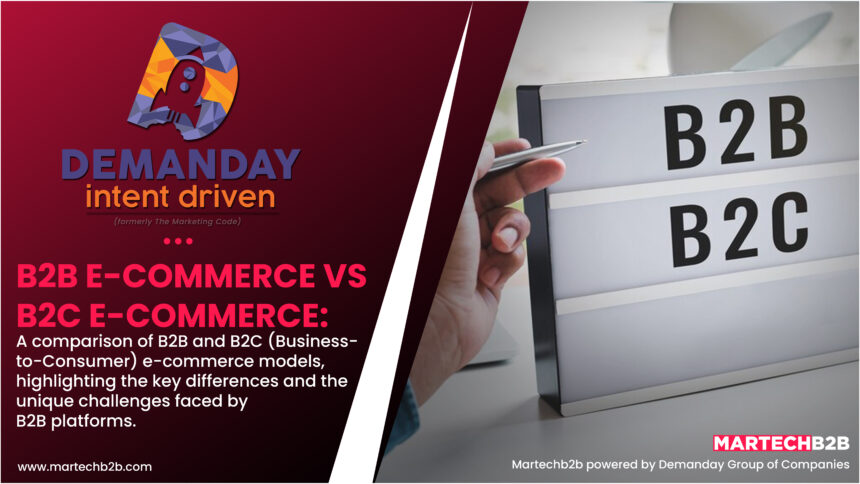B2B (Business-to-Business) and B2C (Business-to-Consumer) e-commerce models are two distinct approaches to conducting online commerce, catering to different customer bases and serving various business needs. Let’s compare these two models and highlight their key differences and the unique challenges faced by B2B platforms:
- Target Audience:
- B2B E-commerce: B2B platforms target businesses and wholesalers who purchase products and services for their own business operations or for resale. The customers are typically professionals representing companies and buying in bulk.
- B2C E-commerce: B2C platforms target individual consumers who purchase products and services for personal use. The customer base is usually much larger and more diverse, including everyday consumers.
- Transaction Volume and Order Value:
- B2B E-commerce: B2B transactions usually involve larger order volumes and higher order values due to bulk purchases and long-term contracts. These transactions may have a more extended sales cycle.
- B2C E-commerce: B2C transactions are generally smaller in terms of volume and value. Consumers tend to make individual purchases, and the sales cycle is often shorter.
- Decision-Making Process:
- B2B E-commerce: B2B purchases often involve multiple stakeholders, such as procurement teams, managers, and executives. The decision-making process can be complex and requires personalized customer support.
- B2C E-commerce: B2C purchases are typically made by individual consumers who decide independently, relying on product information, reviews, and recommendations.
- Product Complexity:
- B2B E-commerce: B2B products and services are often more complex, specialized, and tailored to business needs. They may require customization, technical specifications, or integration with existing systems.
- B2C E-commerce: B2C products are usually standardized and cater to a broader audience. While some products might have variations, they are generally simpler than B2B offerings.
- Pricing and Negotiation:
- B2B E-commerce: B2B pricing can be more dynamic, with negotiated or contract-based pricing depending on the customer’s relationship and order volume. Price tiers and quantity discounts are common.
- B2C E-commerce: B2C pricing is usually fixed, with occasional promotions or discounts for individual consumers.
Unique Challenges Faced by B2B Platforms:
- Account Management: B2B platforms require robust account management capabilities to handle multiple users, roles, and permissions associated with business accounts.
- Personalization: B2B customers expect personalized experiences, such as custom pricing, product catalogs, and tailored recommendations based on their business needs.
- Integration: B2B e-commerce platforms often need to integrate with various backend systems like ERP (Enterprise Resource Planning), CRM (Customer Relationship Management), and inventory management systems.
- Order Fulfillment: B2B orders are larger and more complex, necessitating efficient order processing, logistics, and delivery to meet customer expectations.
- Customer Support: B2B customers often require dedicated customer support for complex inquiries, assistance with large purchases, and post-sales support.
- Credit and Payment Terms: B2B transactions may involve credit-based payment terms, adding complexity to payment processing and risk assessment.
In summary, B2B and B2C e-commerce models have distinct characteristics and cater to different customer segments. B2B platforms face unique challenges in meeting the complex needs of business customers and managing larger and more intricate transactions. Providing excellent customer support, personalization, and seamless integration are critical for the success of B2B e-commerce ventures.


